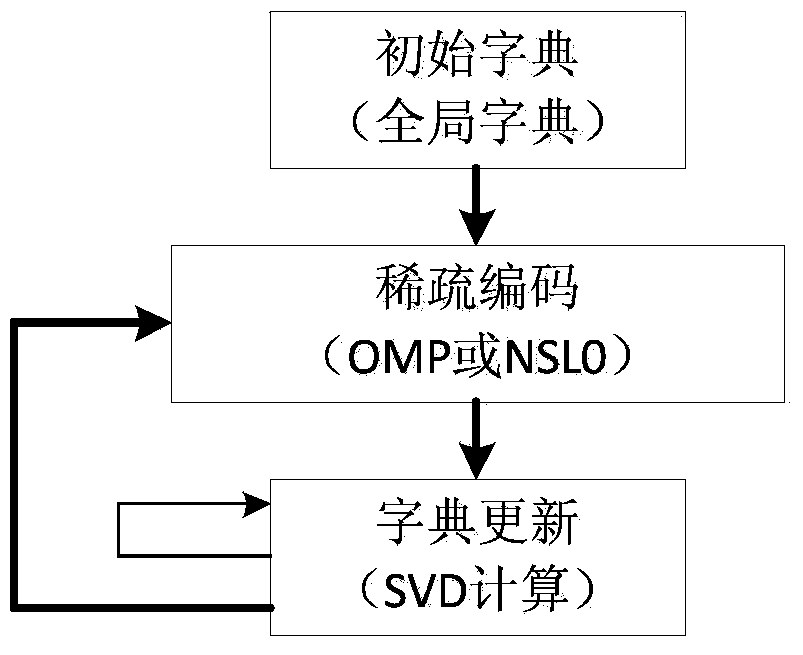Video coding and decoding system based on dictionary learning and compressed sensing
A video codec and compressed sensing technology, which is applied in the field of video compressed sensing and image sparse representation, can solve the problems of high computing power and memory capacity of the encoder and unsuitable problems, so as to reduce the amount of transmitted data and improve the reconstruction accuracy , the effect of reducing the refactoring time
- Summary
- Abstract
- Description
- Claims
- Application Information
AI Technical Summary
Problems solved by technology
Method used
Image
Examples
Embodiment Construction
[0017] In order to achieve the above objective, the present invention uses the compressed sensing based on dictionary learning to complete the entire video coding and decoding system. It mainly includes two parts: video encoding end and decoding end.
[0018] At the encoding end, according to the requirements of reconstruction accuracy and real-time performance, the frames in the video will be divided into two categories, one is key frames (K frames), and the other is non-key frames (CS frames). Every two frames form a group, that is, the group of pictures (GOP) is 2, the odd-numbered frames are K frames, and the CS frames of the group are immediately followed. For K frames, according to the theory of compressed sensing, the image pixel data of the K frames are temporarily stored, and then the dimension is reduced through the observation matrix Φ, and the reduced data is transmitted to the decoding end through the wireless transmitting module. For the CS frame, after reading the...
PUM
 Login to View More
Login to View More Abstract
Description
Claims
Application Information
 Login to View More
Login to View More - R&D
- Intellectual Property
- Life Sciences
- Materials
- Tech Scout
- Unparalleled Data Quality
- Higher Quality Content
- 60% Fewer Hallucinations
Browse by: Latest US Patents, China's latest patents, Technical Efficacy Thesaurus, Application Domain, Technology Topic, Popular Technical Reports.
© 2025 PatSnap. All rights reserved.Legal|Privacy policy|Modern Slavery Act Transparency Statement|Sitemap|About US| Contact US: help@patsnap.com



